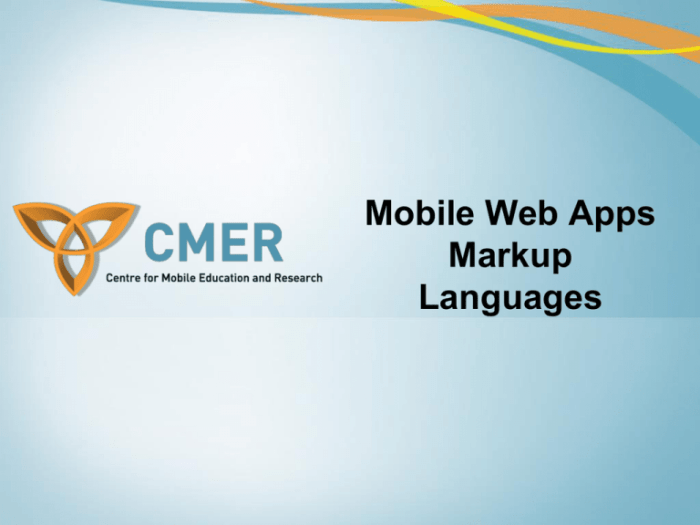Developing Content for Mobile Users sets the stage for creating captivating online experiences tailored for smartphone users. Dive into the world of mobile optimization with key insights and best practices that will elevate your digital content game.
Importance of Mobile-Friendly Content

In today’s digital landscape, developing content tailored for mobile users is absolutely crucial. With the increasing reliance on smartphones and tablets for web browsing and online activities, businesses and content creators must prioritize mobile-friendly content to effectively reach their target audience.
Rise of Mobile Usage
Mobile usage has been on a steady rise in recent years, with more people accessing the internet through their mobile devices than ever before. According to a report by Statista, mobile devices accounted for over 50% of global website traffic in 2020, and this number is expected to continue growing.
- Mobile devices are now the primary means of internet access for a large portion of the population, making it essential for content to be optimized for mobile viewing.
- Case studies have shown that websites with mobile-friendly content experience higher engagement rates and lower bounce rates compared to those that are not optimized for mobile.
- With the majority of users accessing websites on the go, having mobile-friendly content can significantly impact user experience and overall satisfaction.
Characteristics of Mobile-Optimized Content
When it comes to creating content for mobile users, there are key features that can make a significant difference in the user experience. By understanding these characteristics, you can tailor your content to be more suitable for mobile devices.
Responsive Design Elements
One of the best practices for creating mobile-optimized content is to incorporate responsive design elements. This means that your content should adapt and adjust to different screen sizes and orientations, providing a seamless experience for users across various devices.
- Use flexible grids and layouts that can easily adjust to different screen sizes.
- Employ fluid images that resize proportionally based on the screen size.
- Implement media queries to apply different styles based on the device’s characteristics.
Optimization for Faster Loading Times
Another crucial aspect of mobile-optimized content is optimizing for faster loading times. Mobile users expect quick access to information, so it’s essential to ensure that your content loads swiftly on mobile devices.
- Compress images and videos to reduce file sizes without compromising quality.
- Minimize HTTP requests by combining files and resources whenever possible.
- Leverage browser caching to store frequently accessed resources locally on the device.
Creating Engaging Mobile Content: Developing Content For Mobile Users
In today’s fast-paced digital world, creating engaging mobile content is crucial to capturing and retaining the attention of mobile users. With the limited screen space and short attention spans, it’s important to make your content visually appealing and easy to consume on mobile devices.
Tips for Making Content Visually Appealing, Developing Content for Mobile Users
Creating visually appealing content for mobile screens involves using eye-catching visuals, such as high-quality images, videos, and graphics. Make sure your content is well-formatted and easy to read by using clear fonts, appropriate font sizes, and plenty of white space. Incorporating color schemes that are visually pleasing and consistent with your brand can also help make your content stand out.
Crafting Concise and Scannable Content
Crafting concise and scannable content is essential for mobile users who are often on the go. Break up your content into short paragraphs, bullet points, and subheadings to make it easier for users to scan and digest information quickly. Use simple language and avoid jargon to ensure your message is easily understood. Remember to keep your content focused and to the point to maintain user engagement.
Interactive Content Formats for Mobile Platforms
Interactive content formats are highly engaging for mobile users and can help increase user interaction and retention. Some examples of interactive content formats that work well on mobile platforms include quizzes, polls, surveys, interactive infographics, and video content with interactive elements. These formats encourage users to actively participate and engage with your content, making it more memorable and shareable.
Mobile Strategies

When it comes to mobile , it’s crucial to understand that optimizing for mobile devices is not the same as optimizing for desktop. Mobile focuses on delivering a seamless user experience on smartphones and tablets, considering factors like page speed, mobile responsiveness, and local search optimization.
Optimizing Content for Mobile Search Engines
- Ensure your website is mobile-friendly by using responsive design or a separate mobile version.
- Optimize your website for local search by including your business address, phone number, and operating hours on your mobile site.
- Focus on improving page speed by compressing images, minifying CSS and JavaScript, and leveraging browser caching.
- Use relevant s in your content, headings, and meta tags to improve visibility on mobile search engines.
Impact of Mobile-Friendliness on Search Engine Rankings
Google’s mobile-first indexing means that websites optimized for mobile devices are more likely to rank higher in search results.
- Mobile-friendly websites are favored by search engines, leading to better visibility and higher rankings.
- Improved user experience on mobile devices can reduce bounce rates and increase time spent on site, signaling to search engines that your content is valuable.
- Mobile optimization can also help attract more local search traffic, especially for businesses targeting mobile users in specific geographic locations.






